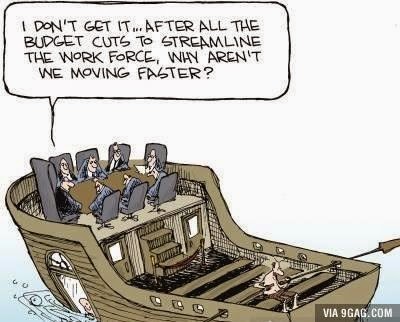According to The Motley Fool, some City analysts now believe that Tesco’s accountants inflated the company’s loss, to get as much bad news as possible out of the way now, and flatter figures going forward.
In practice, their £2.3bn write-down of the value of currently trading UK stores means that Tesco is now very focused on ways of driving sales and profits per store. As you know, they determine the value of a store by calculating its future cashflows, so if you can demonstrate that your brand-footprint's sales are significantly greater than £1,000/sq ft/annum, this has to be a plus.
However, Tesco's real gain has to be the additional net margin represented by your brand.
Typically, say Tesco have an average 25% gross margin that nets to 3% in a reasonable year. With store running costs of about 15% including say 2% shrink, this leaves 10% to cover central costs and profit. This means that your brand's 30% gross margin, with average handling costs and shrink, could reach the bottom line as a conservative net 5%...
Day to day, your brand's 'surplus' profit intensity will help Tesco off-set some of the long-tail products' short-falls and also finance some of the 20+% space redundancy in large outlets.
But the real leverage has to come from demonstrating that you are a net contributor to Tesco's inevitable turnaround..
Incidentally, given that a further £2.4bn was written off stores trading outside the UK, it might be worth extending your insight to overseas colleagues..
Meanwhile, why not feed your actual Tesco Gross Margins into the above calculation and really open up that buyer-seller discussion?
In practice, their £2.3bn write-down of the value of currently trading UK stores means that Tesco is now very focused on ways of driving sales and profits per store. As you know, they determine the value of a store by calculating its future cashflows, so if you can demonstrate that your brand-footprint's sales are significantly greater than £1,000/sq ft/annum, this has to be a plus.
However, Tesco's real gain has to be the additional net margin represented by your brand.
Typically, say Tesco have an average 25% gross margin that nets to 3% in a reasonable year. With store running costs of about 15% including say 2% shrink, this leaves 10% to cover central costs and profit. This means that your brand's 30% gross margin, with average handling costs and shrink, could reach the bottom line as a conservative net 5%...
Day to day, your brand's 'surplus' profit intensity will help Tesco off-set some of the long-tail products' short-falls and also finance some of the 20+% space redundancy in large outlets.
But the real leverage has to come from demonstrating that you are a net contributor to Tesco's inevitable turnaround..
Incidentally, given that a further £2.4bn was written off stores trading outside the UK, it might be worth extending your insight to overseas colleagues..
Meanwhile, why not feed your actual Tesco Gross Margins into the above calculation and really open up that buyer-seller discussion?










